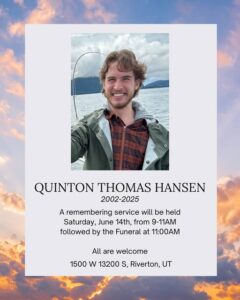Boeing Whistleblower Suicide – In what has become one of the most significant aviation disasters of recent years, an Air India Boeing 787-8 Dreamliner crashed shortly after takeoff from Ahmedabad, killing 241 of the 242 people on board. This catastrophic event has not only sent shockwaves through the aviation world but has also reignited scrutiny of Boeing’s manufacturing practices, safety culture, and the legacy of one of its most vocal whistleblowers, John Barnett.
On Thursday, the flight from Ahmedabad to London Gatwick ended in tragedy moments after departure. Witnesses reported seeing the aircraft lose altitude rapidly, with emergency services arriving swiftly at the scene. The crash resulted in the loss of nearly all passengers and crew, with only one survivor. Investigators are diligently working to determine the precise cause of the failure, but early indications suggest a catastrophic technical malfunction or structural failure.
The Boeing 787 Dreamliner, celebrated for its innovation and efficiency, has faced persistent questions about manufacturing quality and safety oversight. The recent crash has cast a harsh spotlight on these concerns, prompting urgent calls for comprehensive investigations and accountability.
Behind the scenes, the story of systemic safety issues within Boeing’s production processes has been ongoing. Among those who tried to sound the alarm was John Barnett, a former quality manager whose outspoken criticism of Boeing’s safety culture has made him a notable figure in aerospace safety advocacy.
Born in California in 1962, John Barnett’s career was rooted in aerospace manufacturing and safety. After working on NASA’s Space Shuttle program and the B-1 Lancer bomber, Barnett joined Boeing in 1988, ascending to a key role at the North Charleston plant, where he specialized in quality inspection.
Between 2010 and 2017, Barnett became increasingly vocal about safety lapses he observed. He reported that employees were pressured to ignore defects, that critical safety components were compromised or missing, and that potentially dangerous shortcuts were being taken during assembly. His allegations included metal shavings near wiring, improperly recorded parts, and oxygen masks that might fail in emergencies.
Despite raising these concerns through formal channels—including complaints to the FAA and OSHA—Barnett claimed that Boeing retaliated against him. He was alleged to have been denied promotions, isolated from teams, and subjected to a hostile work environment. His warnings, however, were only partially heeded; the FAA acknowledged some issues but did not fully act on his reports, while OSHA dismissed his claims, leading Barnett to feel marginalized and ignored.
After retiring in 2017, Barnett continued to speak out, becoming a prominent critic of Boeing’s safety culture. His insights gained further prominence after the 737 MAX disasters, which he discussed in interviews and in the 2022 Netflix documentary *Downfall: The Case Against Boeing*. The documentary examined systemic failures within Boeing, emphasizing the importance of corporate accountability and safety.
In early 2024, Barnett once again raised alarms about ongoing quality control issues following a series of incidents involving Boeing aircraft, including a recent Alaska Airlines door plug blowout. His unwavering stance made him a symbol of integrity in an industry often criticized for prioritizing profits over safety.
On March 9, 2024, John Barnett was found dead in his pickup truck in Charleston, South Carolina. The authorities confirmed it was a suicide, with forensic evidence and a handwritten note indicating his frustration with Boeing and his inability to continue fighting against what he believed were dangerous safety lapses. The note read, “I can’t do this any longer. F**k Boeing. I pray Boeing pays.”
His death has sparked a wave of mourning among safety advocates, former colleagues, and those who believe his warnings could have prevented disasters. Many see Barnett as a martyr who paid the ultimate price for speaking truth to power.
As investigators probe the causes of the Ahmedabad crash, Barnett’s story underscores the vital importance of transparency, whistleblower protections, and rigorous safety oversight in aviation manufacturing. The tragedy highlights how systemic issues, if left unaddressed, can have devastating consequences.
The aerospace industry faces a critical juncture: to learn from past mistakes, uphold safety standards, and foster an environment where employees can report concerns without fear. The loss of nearly all on board the Dreamliner serves as a somber reminder that safety must always come first.
The crash has prompted calls for accountability within Boeing and renewed efforts to scrutinize manufacturing practices. Meanwhile, Barnett’s legacy endures as a symbol of courage and integrity—reminding us that transparency and vigilance are essential to prevent future tragedies.
As the aviation community mourns the lives lost and reflects on the lessons learned, the hope remains that such a catastrophe will never happen again, and that voices like Barnett’s will inspire safer, more responsible aerospace practices.
